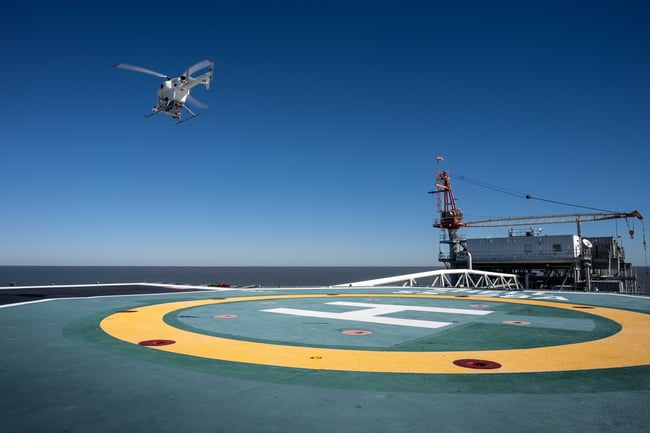In today’s energy infrastructure sector, data by itself is no longer enough. Drones, sensors and...
BVLOS Pipeline Monitoring: Why “Low-and-Slow” Ops Are Future of Asset Integrity
The Future Flies Beyond the Horizon
With the U.S. Government fast-tracking BVLOS regulations under the June 6, 2025 Executive Order “Unleashing American Drone Dominance,” the race is on to modernise linear-asset inspections. Helicopter-class drones such as the SwissDrones SDO50, operated under Xplorate’s IOGP 690-compliant BVLOS Flight Standards and integrated into our Intelligence Data Reporting Element, deliver safer, richer, and more cost-efficient insights than any ground patrol or crewed aircraft.

The Productivity Squeeze
Pipeline operators juggle rising costs, stricter ESG targets, and growing public-safety expectations. Traditional helicopter flyovers and fatigue inducing road patrols (“windscreen time”) struggle to catch small anomalies early and create avoidable issues.
BVLOS (Beyond Visual Line of Sight) RPAS changes this by enabling continuous corridor coverage at scale, with higher resolution, lower risk, and dramatically improved production & cost-efficiency.
Why BVLOS Is Non-Negotiable
| Benefit | Traditional Method | BVLOS RPAS Advantage |
| Coverage |
VLOS drones limited to a few km; road patrols are slow, Helicopters & Airplanes are expensive |
Multiple times the range of VLOS in a single sortie 365 Day / Night Operations |
| Safety |
Aircrew or drivers exposed to hazards |
Ground-based operations only |
| Regulatory Momentum |
VLOS Aircraft not equipped for BVLOS operations Increased calls for Twin Engine and Twin Pilot Flight Crews for traditional aircraft |
U.S. EO directs FAA to accelerate full BVLOS rule implementation. Australia already approves such operations |
| Cost per KM |
High flight-hour costs, ferrying and fuel costs for traditional aircraft Increased logistics cost and unscalable for VLOS |
Autonomous, fueled ops reduce inspection exponentially |
Helicopter-Type RPAS vs. Fixed-Wing & VTOL Platforms
Bottom Line Up Front: Helicopter-class RPAS concentrate more sensors in fewer flights, maximising data per flight-hour and minimising mobilisation overhead.
|
Criterion |
Helicopter-Type (SDO50) |
Fixed-Wing |
Tilt-Rotor / eVTOL |
|---|---|---|---|
|
Payload Capacity |
Up to 45 kg – full sensor stack |
1–5 kg (Non runway) |
5–10 kg |
|
Hover Capability |
True hover, precision tracking |
None |
Limited, energy intensive |
|
Data Quality |
Low-and-slow = high fidelity |
Speed = motion blur, susceptible to wind gusts |
Hover instability reduces fidelity, susceptible to wind gusts |
|
Launch Requirements |
VTOL – no runway needed |
Requires launcher/catapult/runway |
VTOL, but complex |
|
Mission Efficiency |
Fewer flights, multiple payloads |
Multiple passes required on many missions / poor turning radius for complex assests / no ability to stop and check |
Multiple passes required on many missions / poor turning radius for complex assets / very limited ability to stop and check |
The SwissDrones SDO50 Edge
-
Endurance (3 hrs) → fewer refuels, longer corridor legs
-
Low-altitude stability for QL0 accuracy and resolution
-
Multi-payload architecture: e.g., LiDAR + RGB + 360° video stitched for immersive ROW review, single pass flights
-
All-weather airframe keeps schedules on track
The Xplorate Technology Stack
|
Layer |
Key Elements |
Operator Value |
|---|---|---|
|
Aircraft |
SwissDrones SDO50 helicopter-type RPAS |
Multi-payload, low-and-slow, BVLOS-ready |
|
BVLOS Flight Standards |
Xplorate’s CASA-accepted BVLOS manuals + IOGP 690 Oil & Gas approvals |
Faster aviation regulator sign-off, global audit readiness |
|
Intelligence DATA Platform |
Cloud engine ingests LiDAR, RGB, 360° video; AI auto-flags anomalies; exports to multiple report types |
Days-to-hours insight cycle; board-room-ready reports |
Multi-Mission, Multi-ROI
-
Asset Integrity + ROW Vegetation + Leak Detection + Situational Awareness in one flight
-
High-definition 360° Corridor Video
-
Emergency Response (spill mapping, flood impact) using same airframe & crew
Each stacked mission multiplies ROI and slashes downtime.
Australian Case-in-Point
In 2024, Xplorate replaced a chartered helicopter programme for a 550km gas pipeline in Australia. Flying the SDO50 BVLOS with LiDAR + RGB.
Results: Inspection safety increased, insights up, maintenance costs down, fault finding early, production enhancements.

Looking Ahead
-
Regulatory certainty: EO-driven FAA timelines promise BVLOS rule finalisation by 2026.
-
Edge processing: On-board AI will move anomaly detection from cloud to cockpit.
-
New Aircraft Technologies: Longer endurance, lower maintenance costs, remote operations.
Xplorate is already delivering on all three fronts.
Call-to-Action
Pipeline integrity’s future is BVLOS, helicopter-class, multi-payload RPAS. Pair the SwissDrones SDO50 with Xplorate’s IOGP-approved Flight Standards and Intelligence Data to gain safer operations and actionable insights—fast.
👉 Book a demo session or request a sample Intelligence Data report today.




Send us a Note